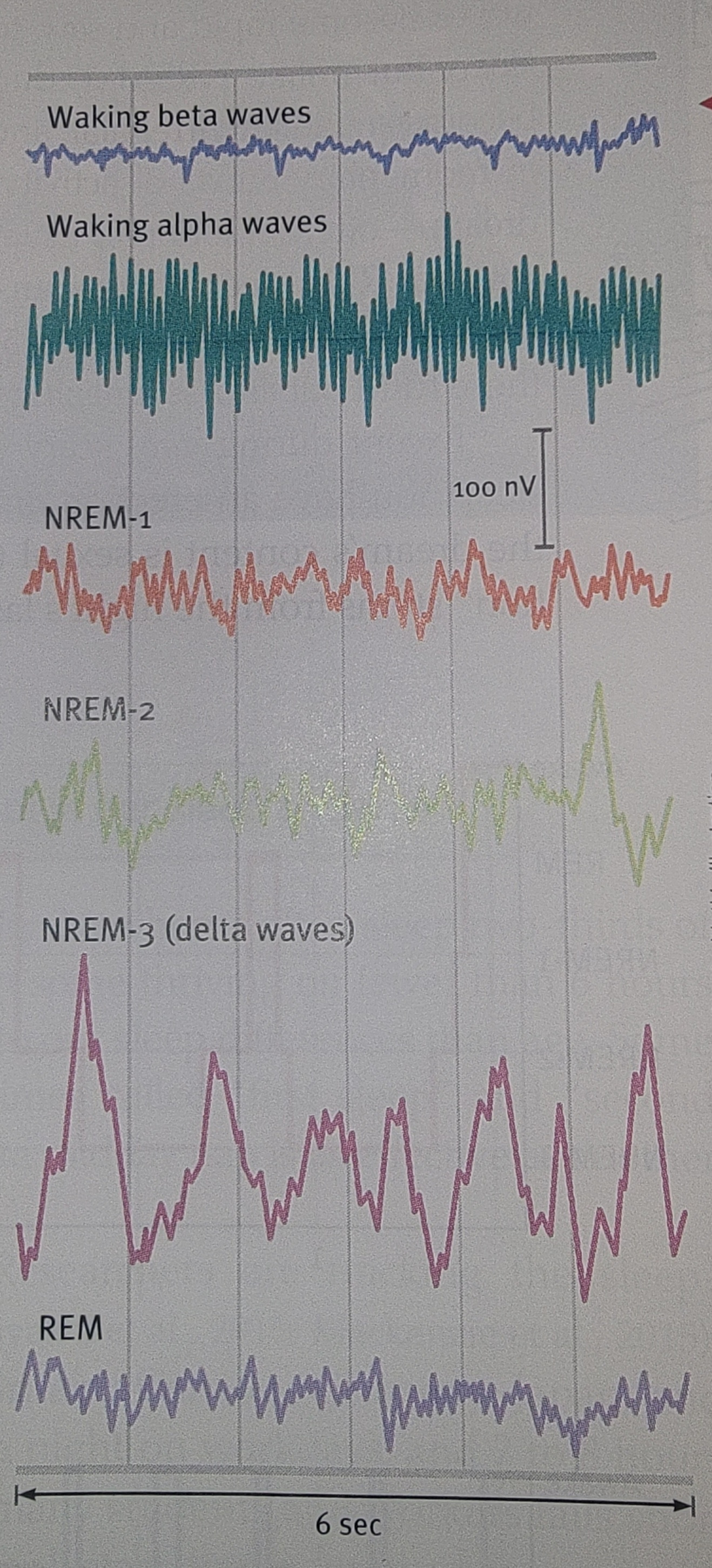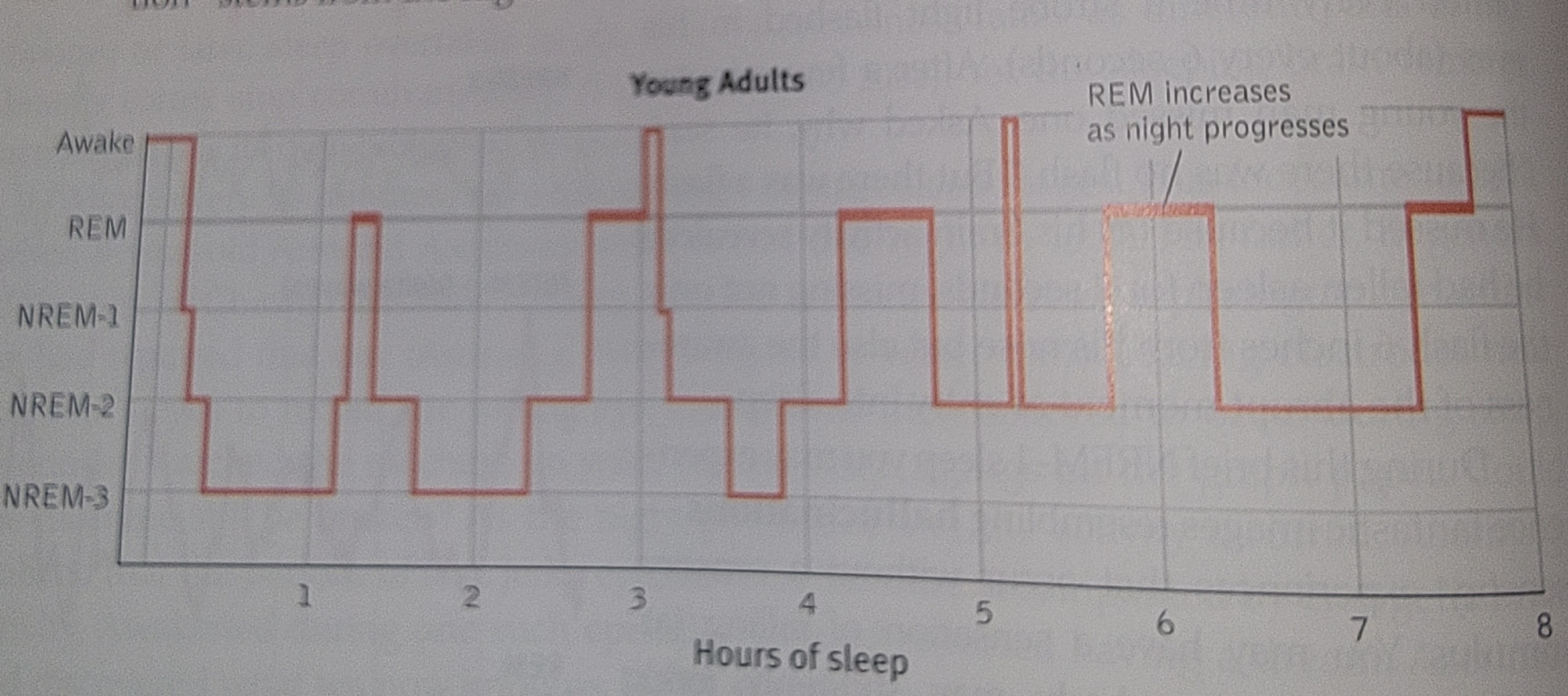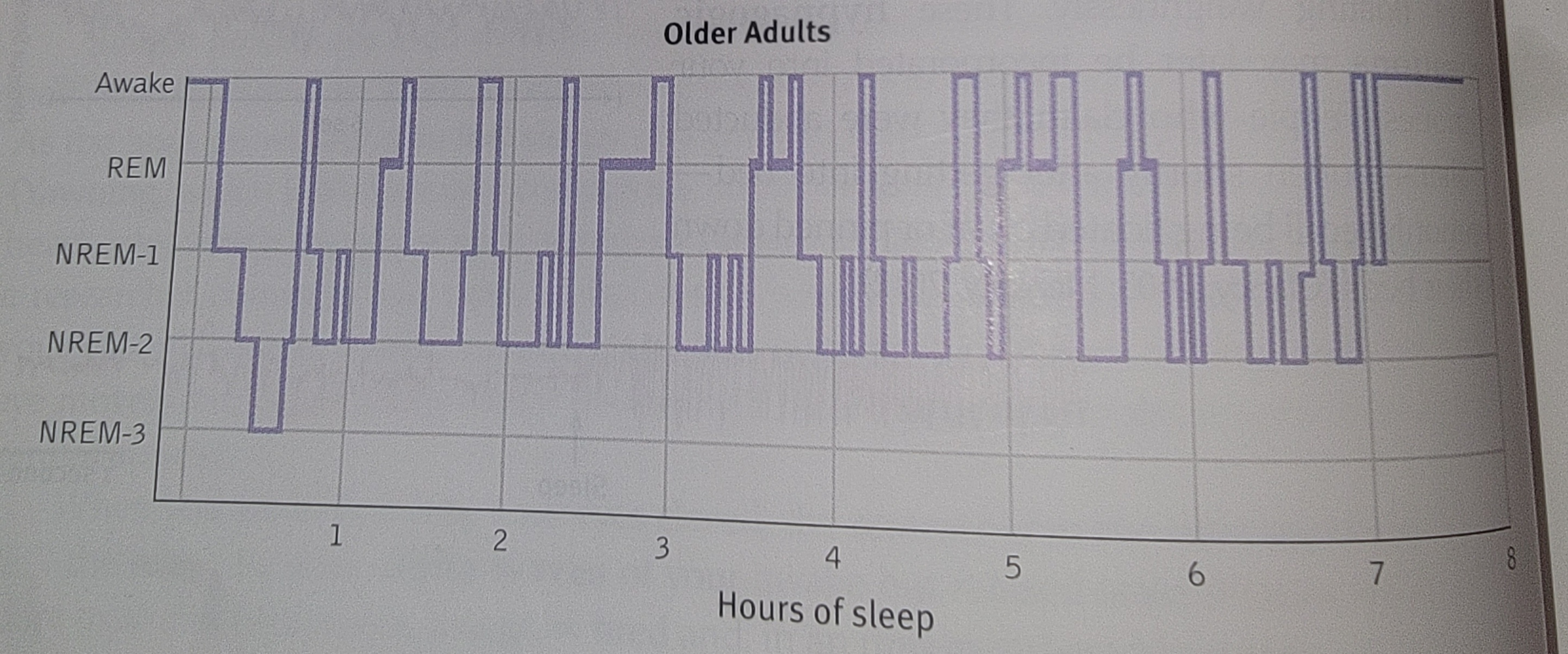1.5 Sleep
1/15
There's no tags or description
Looks like no tags are added yet.
Name | Mastery | Learn | Test | Matching | Spaced |
|---|
No study sessions yet.
16 Terms
Consciousness
our subjective awareness of ourselves and our environment
Sleep and wakefulness are two types of consciousness
Circadian rhythm
our biological clock and sleep/wake cycle
regulates bodily rhythms(ex temperature and wakefulness) that occur on a 24 hour cycle
As morning nears, body temperature rises ,it then peaks during the day, dips for a time in the early afternoon, and begins to drop again in the evening
Thinking and memory improve as we approach our daily peak in circadian arousal ex pulling an all nighter you feel groggy in the middle of the night, but as you approach your normal wake up time you have a sense of new alertness
age and experience can alter our circadian rhythm
Most teens and young adults are evening energized “night owls” while older adults are morning loving “larks”
Jet lag and shift work disrupt the circadian rhythm
Sleep stages
identified by their specific EEG patterns
Alpha waves- When you are in bed with your eyes closed you are in an awakened but relaxed state.
Alpha waves are slow brain waves.
NREM-1 stage- You grow tired and slip into sleep. This transition is marked by slowed breathing and irregular brain waves. This is non-rapid eye movement sleep.
NREM sleep occurs in stages 1-3, encompassing all sleep stages except for REM sleep, and decreases in duration throughout the cycle.
During NREM-1 you may experience hallucinations(false sensory experiences, such as seeing something in the absence of an external visual stimulus).
You may also have the sensation of falling or of floating weightlessly. These are hypnagogic sensations (bizarre experiences while transitioning to sleep) and they may stay in your memory.
NREM-2 stage- You then relax more deeply and begin about 20 minutes of NREM-2 sleep.
In this stage you have sleep spindles( bursts of rapid, rhythmic, brain-wave activity)
You could still be awakened without much difficulty, but you’re still asleep
You spend about half of your night here
NREM-3 stage- Then you transition to the deep sleep of NREM-3. This sleep lasts for about 30 minutes
Your brain emits large, slow delta waves
You are hard to awaken
REM sleep- About an hour after you first fall asleep, not directly after NREM-3, This is rapid eye movement sleep
For about 10 minutes, your brain waves become rapid and saw-toothed, more like those of nearly awake NREM-1 which is why REM is considered paradoxical because it produces waves similar to wakefulness, but the body is at its most relaxed
But unlike NREM-1, during REM sleep your heart rate rises, your breathing becomes rapid and irregular, and every half minute or so your closed eyes dart around in momentary bursts of activity
These eye movements announce the beginning of a dream-often emotional, usually story-like, and richly hallucinatory
body Is paralyzed
The frequency of REM sleep typically increases as the cycle progresses
REM rebound- We need REM sleep. Deprived of it by repeated awakenings, people return more and more quickly to the REM stage after falling back to sleep. When finally allowed to sleep undisturbed, they sleep like babies-with increased REM sleep, a phenomenon called REM rebound

Young adult typical sleep cycle(not needed just example)
picture

Older adult typical sleep cycle (not needed just example)
picture +tip- A common mistake is that REM comes directly after NREM-3 sleep. It does NOT. Generally, NREM-2 follows NREM-3. Then comes REM

Suprachiasmatic nucleus (SCN)
Cell clusters in the hypothalamus that control the circadian rhythm
Helps monitor the brain’s release of melatonin, which affects our circadian rhythm
Why do we dream?
Activation synthesis theory, consolidation theory,
Activation synthesis theory
We dream because our brain is trying to make sense of neural static
Consolidation theory
We dream because it helps process and strengthen our memories and experiences
If you don’t get good sleep and enough sleep after your learn new stuff, you won’t remember it
sleep is useful for organizing and consolidating memories
Why do we sleep?
Memory consolidation theory and restoration theory
Restoration theory
We sleep because we get tired from daily activities and we sleep to restore our energy and resources
Restoring depleted resources used throughout a given day.
Insomnia
Having trouble falling or staying asleep
can be caused due to stress, medication, or an irregular sleep schedule
Results in tiredness and increased risk of depression
Narcolepsy
uncontrollable sleep attacks, often triggered by strong emotions
person collapses into brief period of REM sleep, with loss of muscular tension
REM sleep behavior disorder
Person acts out their dreams during REM sleep
the paralysis during REM sleep is absent or possibly incomplete
Sleep apnea
Hard time falling asleep or staying asleep because they are struggling with breathing-they stop breathing during sleep
loud snoring
many unaware of their disorder
associated with obesity
other warning signs are daytime sleepiness, irritability, and high blood pressure
Somnambulism (sleep walking)
Sleep walking or talking, normal waking activities while asleep
Sleep talking can occur during any sleep stage
Sleep walking happens in NREM-3 sleep
Few serious concerns